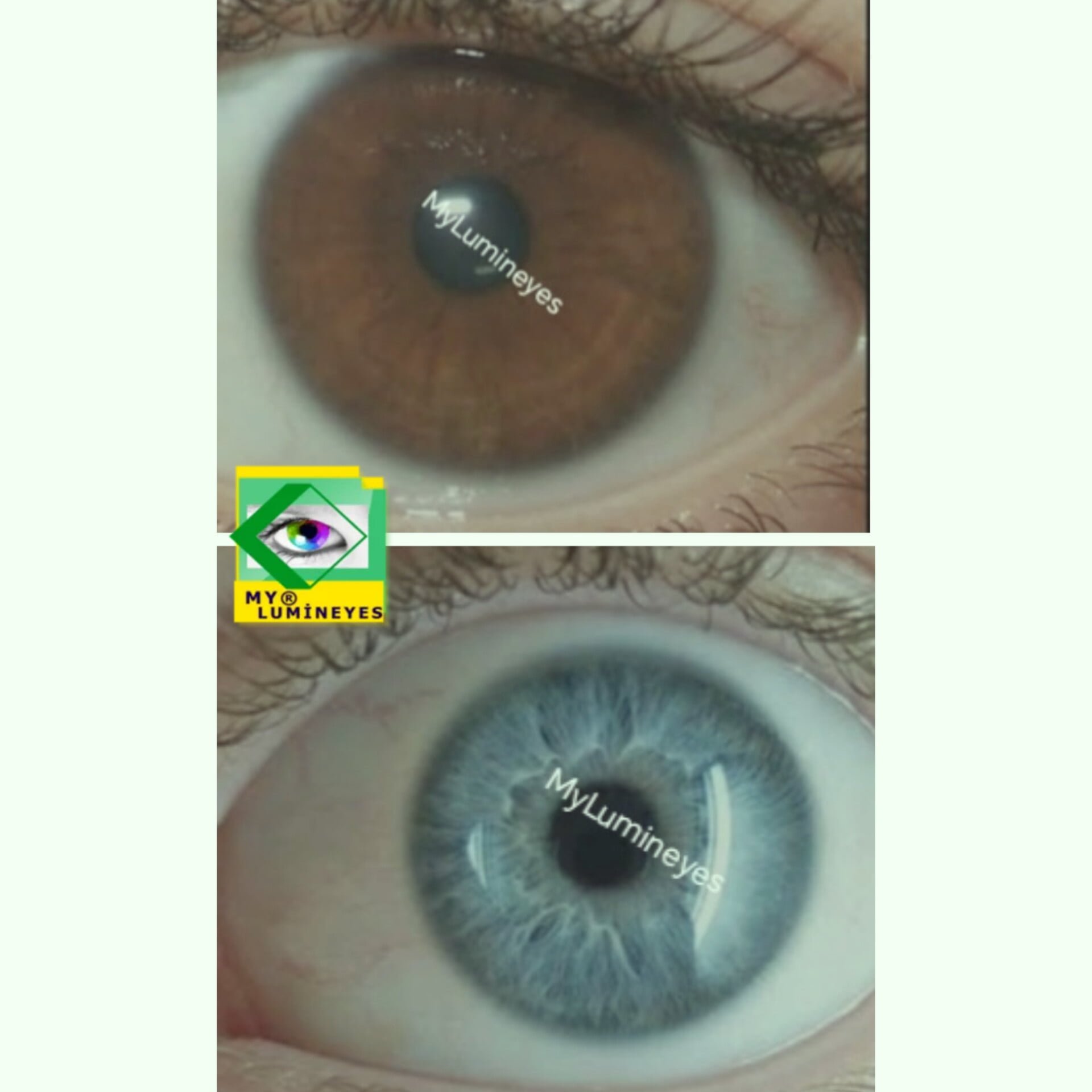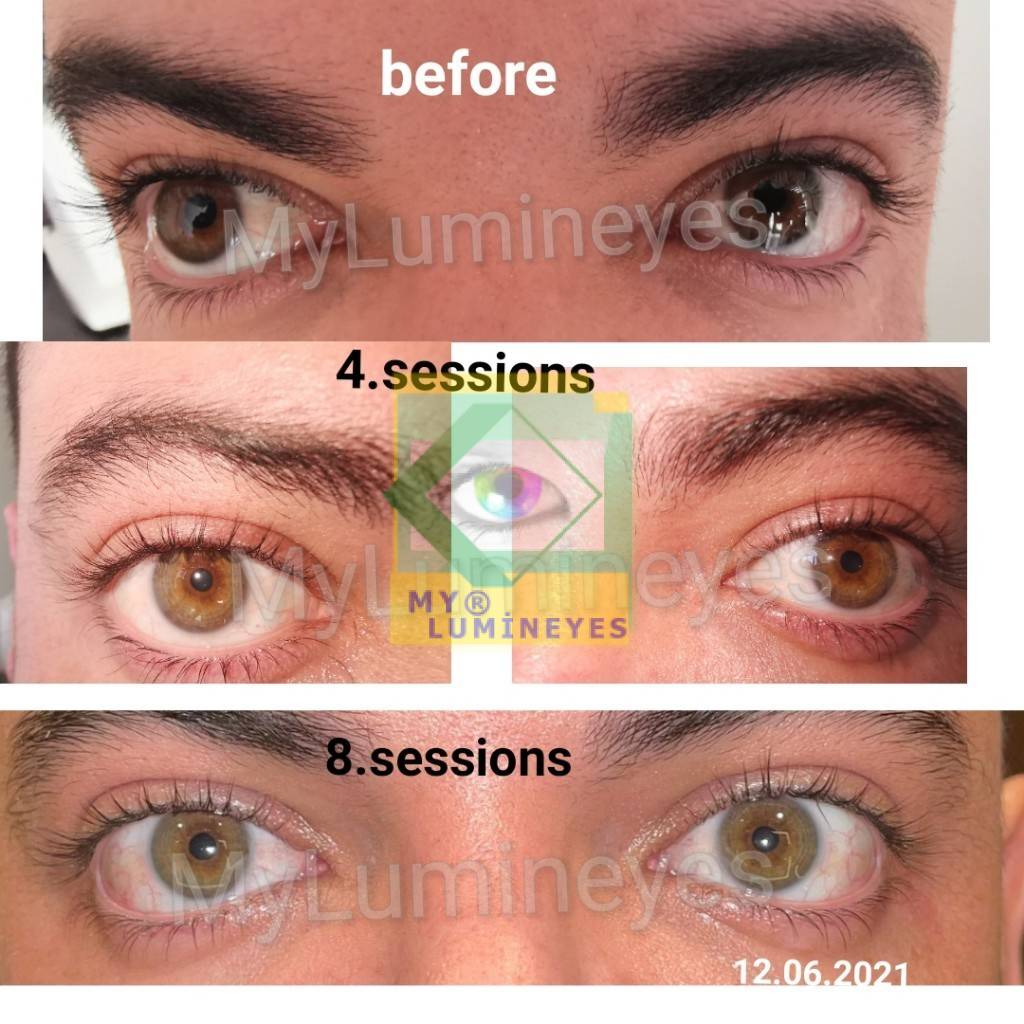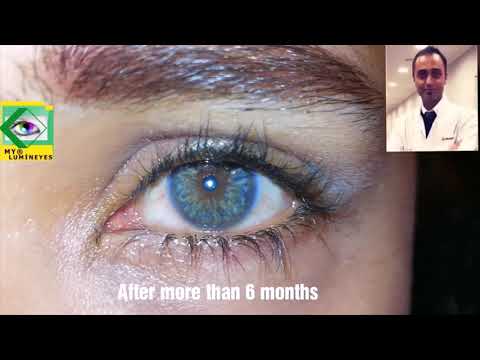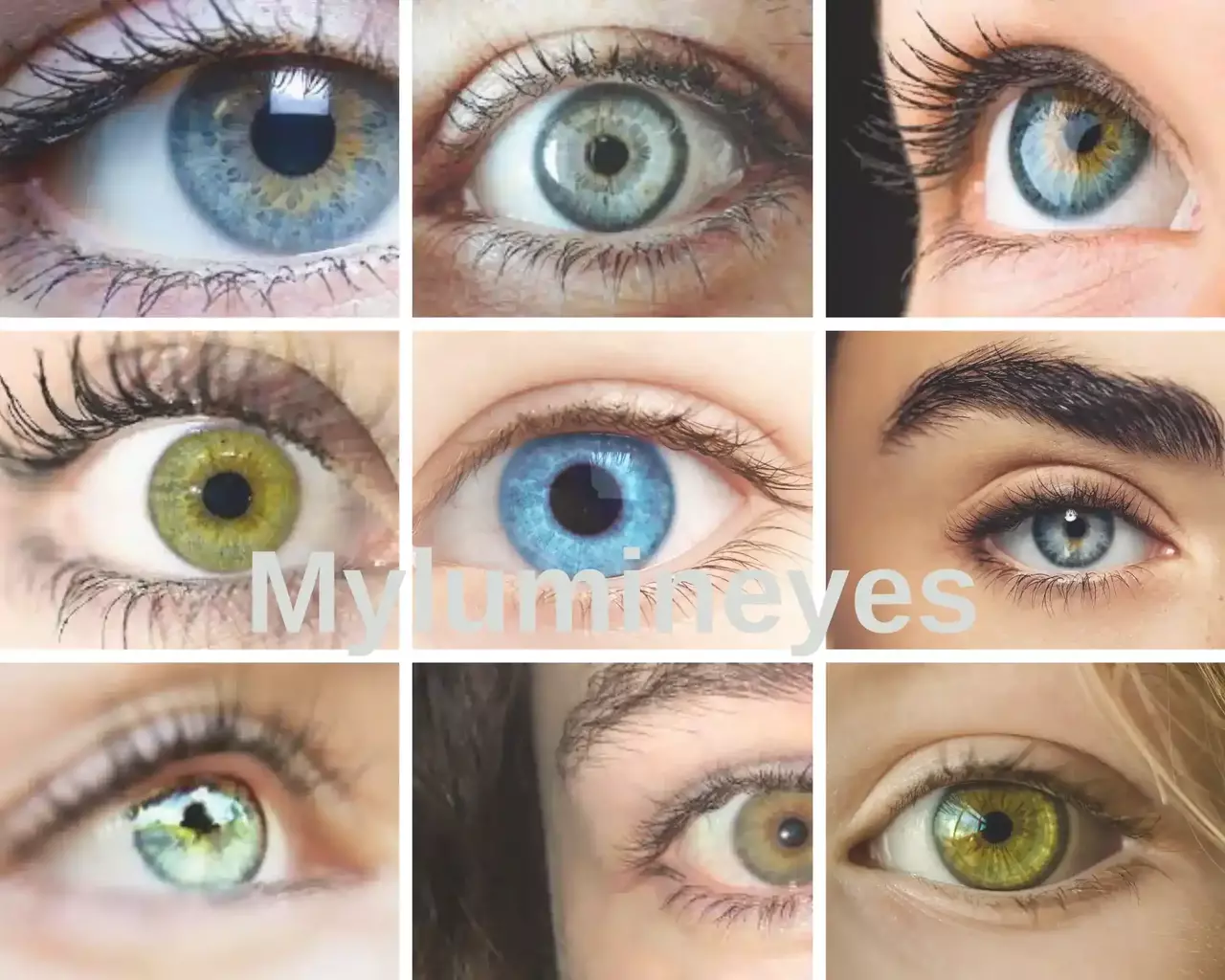What is melanin, and how does it change the color of your eyes?
Your eye color is based on how much melanin you have. The amount of melanin in the upper parts of the iris determines the color of the eye. The amount of melanin in the front parts of the iris (the structure that covers the pupil) determines the color of your eyes. There is a lot of melanin in brown eyes but not almost as much in blue eyes. But there is no blue color in eyes that are blue. Blue eye colors disperse light so that more blue light is reflected back into the surrounding environment.
People with blue eyes lack pigment in this stratum, causing the fibers to disperse and take in more wavelengths of incoming light.
A greater amount of blue light is reflected, resulting in the perception of blue eyes.
Segments of the iris of individuals with green or hazel eyes have a translucent brown pigmentation. When blue light comes into contact with the brown pigment, it creates a captivating green or mottled effect in the eye. Many people have irises with different colors, often with one color closer to the center and another color towards the edges. This variation happens when different parts of the iris have different amounts of pigment.
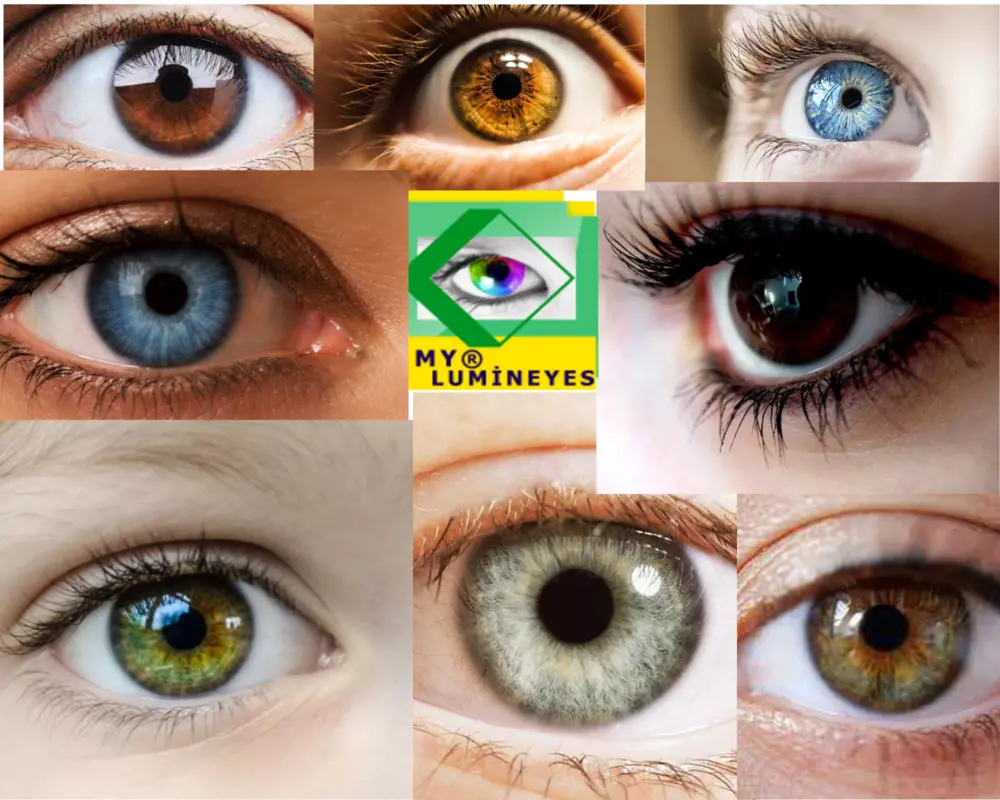
Eye color has little influence on visual acuity, although it may affect visual comfort in certain situations.
Melanin acts as an antioxidant, stabilizing free radicals, and has the ability to absorb light at a variety of wavelengths, including near-infrared, visible, and ultraviolet. The eye consists of several layers of pigmented tissues that contain melanin. Melanin provides protection to cells against damage caused by oxidative stress. The substance has efficacy in suppressing harmful lipid peroxidation and modulating unstable radicals.Hence, melanin mitigates the harmful effects of light and provides protection against the damaging effects of inflammation.
Melanin possesses the capacity to assimilate all variations of infrared, visible, and ultraviolet radiation.
Melanocytes are the cellular entities responsible for the synthesis of the dark pigment known as melanin. Melanin is synthesized by melanocytes as a protective measure against the sun’s UV radiation. It is found in several parts of our body, including the eyes, epidermis, and hair.
If you have blue eyes, your eyes do not literally contain blue pigment. Rather, blue eyes contain less of the brown pigmentation melanin, which absorbs light, so more light reflects backward out of the eye and looks blue.
Types of Melanin and Pigmentation
Eye color differs based on the amount of melanin contained in these compartments. In individuals with blue eyes, a limited number of melanosomes contain a negligible level of melanin. Humans with green eyes have a modest quantity of melanin and a small percentage of melanosomes, whereas those with brown eyes have a significant quantity of melanin contained in a large number of melanosomes.
In the iris, there are two forms of melanin: eumelanin, which generates a dark brown color, and pheomelanin, which generates various shades of amber, green, or hazel. In contrast, blue eyes derive their color from containing a small amount of eumelanin.
The pigment is actually not blue, but because of how light distributes around the iris’s anterior layer, it appears blue.
An imbalance of both types of melanin at sufficiently low concentrations to cause some light dispersion results in green eyes. Like greeen eyes also hazel eyes contain sufficient melanin, they do not experience the light scattering effect. Lack of melanin results in red and “violet” eyes (extremely uncommon), which either reveal the color of the underlying blood vessels or combine with the light scattering effect to produce violet.
The most common eye color, brown accounts for more than half of the world’s population. Some brown eyes have such intense pigmentation that they seem black. Other eye hues include green, blue, hazel, gray, and even amber.
Can the quantity of melanin in your eyes be changed? Can My Eye Color Change?
Permanent changes in eye color are possible via iris implant surgery, corneal pigmentation, and laser eye color change. The “Laser Eye Color Change (Lumineyes)” procedure can reduce melanin in treated areas. Iris implant surgery and corneal pigmentation (keratopigmentation) are surgical methods to change eye color. Lumineyes laser eye color change is a non-invasive method to change your natural eye color.
Typically, trained professionals carry out these procedures, and they necessitate careful consideration and consultation with an eye specialist. It is essential to note that although these techniques can alter aspects of eye color, they do not guarantee an enhancement in vision or eye health.
Keratopigmentation is the implantation of pigmented pigments into the cornea, which can change the eye color irreversibly.
People who desire a more permanent solution for eye color changing may choose this method. Before reaching a decision, it is essential to conduct extensive research on the potential risks and complications associated with these procedures. Keratopigmentation surgery containes high risks in long term!
Iris implant surgery is an alternative method of changing eye color. To accomplish the desired color, this procedure entails installing a custom-made artificial iris over the natural iris. Before undergoing this surgery, it is essential to consult with an experienced ophthalmologist and consider the potential hazards, such as an increased risk of glaucoma or cataracts.
As we mentioned before, this method for iris depigmentation is not suitable for its purpose. In addition, %100 you will face serious complications! If you have had iris implant surgery, you can apply to Dr. Mustafa Mete to get rid of this harmful lens and get treatment urgently.
Changing eye color is one of the medical aesthetics industries that is growing quickly in the health care sector to meet high standards and expectations.
As such, several aesthetic treatments have been created to suit personal preferences for changing the color of the eyes. Such temporary methods like colored contacts and permanent ones like iris implants or keratopigmentation to change eye color.
Our suggested course of action for iris depigmentation is laser treatment, or “Lumineyes”. With Lumineyes laser eye color change, the iris color is permanently changed using non-invasive laser technology. This treatment is still relatively new, hence even if it may seem enticing, doctors and clinics with less expertise are still learning about its long-term implications completely.
To decide whether to get the Lumineyes laser eye color change, you need do a lot of study and speak with a licenced ophthalmologist about the possible dangers and side effects.
Iris depigmentation is possible with a laser that changes the color of the iris by targeting the melanosomes within the stromal cells of the iris.
Consequently, the Lumineyes Technique is the only risk-free method! Laser surgery for eye color change is permanent and very effective, resulting in a natural eye color change! Using an 8-G laser, the Lumineyes procedure removes pigment from the iris, the portion of the eye that imparts color. The destruction of these pigment cells with a laser causes pigment granules to seep out, leaving the eyes with a blue-green or hazel color.
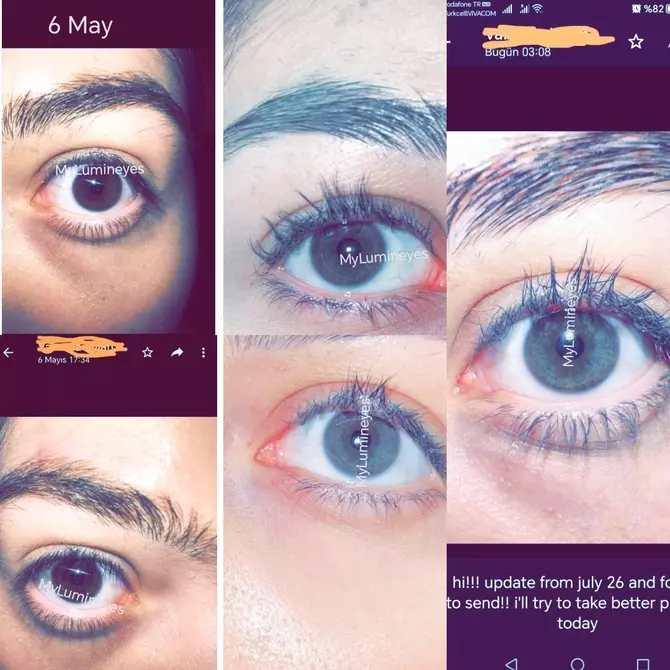
What causes the eyes to have more melanin?
Distinct amounts of melanin pigment granules in the superficial stroma of the iris produce distinct eye colors. More melanin is present in brown eyes than in light-colored eyes. Melanin is a substance in the body that generates pigmentation in the hair, eyes, and skin. If you produce more melanin, your eyes, hair, and skin will become darker.
The quantity of melanin in your body is determined by several factors, including heredity and the amount of sun exposure your ancestors received. When babies are born, their eyes contain little melanin. This is because melanocytes produce melanin when there is a great deal of light, and newborns have been in darkness for many months. By the age of 9 months, your baby’s eye color has stopped changing.
Which color of eye contains the most melanin?
The iris of dark brown-black eyes contains the greatest concentration of the pigment melanin. They may appear black, but they are actually a very, very dark brown due to an abundance of melanin. When observing the eye in intense light, you may only be able to distinguish the pupil from the iris. Less melanin is found in lighter-colored eyes. This reduced pigmentation can make their eyes appear blue, green, amber, or hazel by altering their ability to reflect light.
Individuals with crimson or violet eyes have little to no melanin in their irises. Blue and gray eyes contain the least amount of melanin. Similar to blue eyes, gray eyes have little to no melanin in the stroma (the front layer of the iris). However, gray eyes have more collagen in their stroma than blue eyes, which contributes to their color difference. Dr. Mustafa Mete’s statement changed the belief that green is the rarest eye color. Now we know that gray eye color is the rarest eye color in world.
What decreases the amount of melanin in the eyes? How To Lower Melanin Pigmentation
Vitamin C is an essential nutrient that occurs naturally in the environment. It serves multiple biological and pharmaceutical purposes. It inhibits melanin synthesis by reducing the activity of the tyrosinase enzyme. Vitamin D’s antiapoptotic effect causes human melanocytes to produce more melanin and tyrosinase. Nonetheless, some growth-inhibiting effects on melanocytes have also been reported. There are several methods to reduce the amount of melanin in the eyes. A bleaching agent such as hydroquinone is one option. This can be topically administered to the epidermis around the eyes.
Lasers can also be used to eliminate melanin which named “laser iris depigmentation”.
Vitamin C is an effective skin lightener known as an “inhibitor of melanogenesis” because it inhibits tyrosinase and decreases melanin and melanin intermediates such as dopaquinone. Therefore, if you want to increase your body’s melanin production, you must consume more vitamin C-rich foods, such as berries, citrus fruits, green vegetables, etc.
Taking vitamin C supplements can also increase vitamin C levels. In general, this vitamin is beneficial for the epidermis and immune system. In addition, scientific studies indicate that vitamin A is essential for healthy skin and the production of melanin. You obtain vitamin A from the foods you consume, particularly carrots, sweet potatoes, spinach, and legumes, which contain beta-carotene.
Can honey decrease melanin density in the eyes?
Some individuals advocate using honey and warm water to progressively change the color of the eyes. This method has no scientific support and is not considered secure. Honey and tap water are both contaminated and can cause infections. There is no proof that honey lightens the color of the eyes. Eye color is the consequence of a mix of pigment within the eye and light reflected from outside.
Can brown eyes naturally lighten in color?
The great majority of people provide a negative response. Eye color achieves full maturation in infancy and remains consistent throughout life. However, in a tiny number of people, eye color can get noticeably darker or paler as they age.

